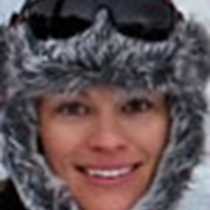Today was a day for ice lovers. We arose to the dulcet tones of our fearless expedition leader Lucho, gently awaking us over the PA. “Good morning, good morning. This is your wake-up call.” He told us about the icy channel that lay ahead: the Lemaire. Lined with nunataks hundreds of meters high, glaciers on the verge of collapsing into the narrow strait, and icebergs…oh the icebergs!
Those of us aboard wondered how such a mighty ship might navigate the barely open passages between the bergs that appeared to shut down any through traffic. Many of us exchanged curious glances, simultaneously considering the challenges of passing through such an ice-choked straight. But Captain Oliver Kruss and the mighty National Geographic Explorer forged ahead. And that was before breakfast. We emerged on the southern end of the Lemaire to find ourselves at Booth Island, where the French explorer, Charcot, overwintered, spending his time charting the bathymetry of the region. Eagerly, we loaded the Zodiacs and spent the morning exploring the iceberg graveyard, where grounded bergs become artistically sculpted remains of glacier calvings.
We listened to the air bubbles inside the ice pop—sounding quite similar to a bowl of Rice Krispies. We admired the ice textures—dimples, bubble lines, ice arches—and gazed in awe at the deep blue that seemed to illuminate the inner ice. Among the ice, large groups of crabeater seals swam around our boats and the bergs. They leapt out of the water with apparent ease, and hauled-out onto the bergs under the austral sun.
The afternoon’s grand-scale backdrop had a similar effect. Gentoos, Adélies, and blue-eyed shags provided a Jurassic Park-like soundscape for our excursion at Petermann Island. Icebergs rolled in the distance, sometimes making large exploding sounds that commanded our attention, and other times simply bobbing slowly to the swell of the sea. Today’s seascape and soundscape inspired awe in every way.







